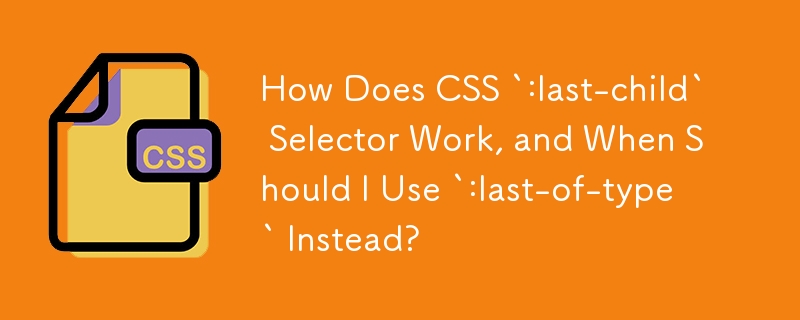

:last-child is a CSS selector that aims to target the last element of a parent container. It's a powerful tool when used appropriately, but it's important to grasp its limitations to avoid unexpected results.
As the documentation states, :last-child targets the "last child element of a parent." This crucial detail often goes unnoticed, leading to confusion. The selector won't work unless the targeted element is the absolute last one in its container.
Consider the following HTML example:
<ul>
<li class="complete">1</li>
<li class="complete">2</li>
<li>3</li>
<li>4</li>
</ul>Now, imagine we want to style only the last element with the "complete" class using :last-child.
li.complete:last-child {
background-color: yellow;
}Unfortunately, this won't work because "2" is not the last element in the list. Instead, "4" is the last element, which doesn't have the "complete" class.
To avoid such mishaps, it's important to remember that :last-child will only apply when the element is the very last one in its parent. If an element isn't the last, its background color won't change, as demonstrated in the above example.
In situations where the element we want to target may not necessarily be the last, it's better to use :last-of-type. This selector will match the last element of a particular type within a parent, regardless of whether it's the very last element overall.
Grasping the nuances of :last-child can empower you to harness its capabilities effectively. It's a valuable selector when targeting elements that are truly the last ones in their containers. However, if the last-of-type selector better suits your requirements, don't hesitate to use it instead.
The above is the detailed content of How Does CSS `:last-child` Selector Work, and When Should I Use `:last-of-type` Instead?. For more information, please follow other related articles on the PHP Chinese website!




